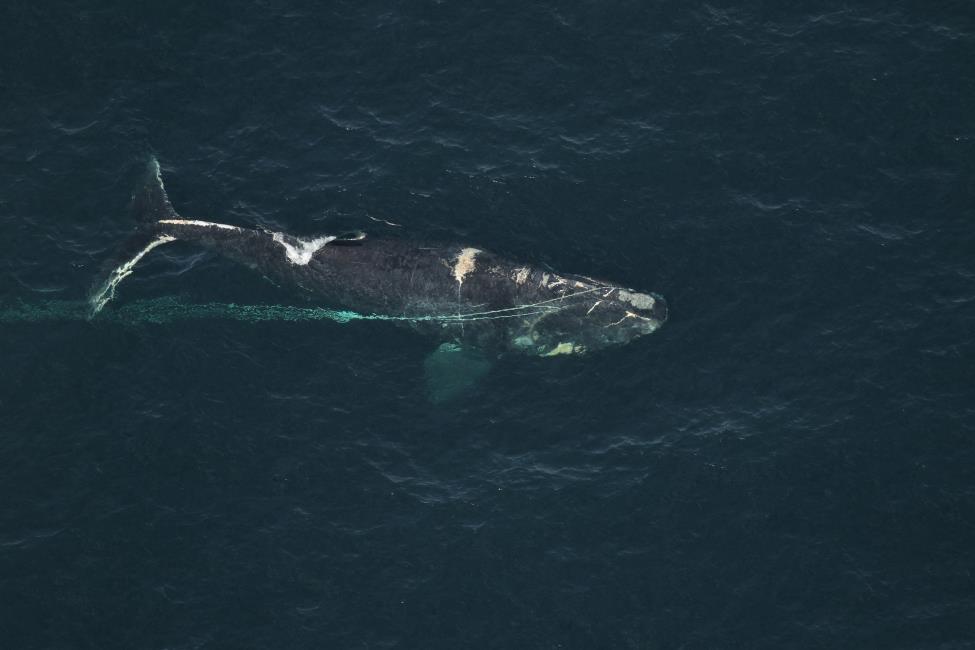

Fishing Gear Regulations Possibly Making Entanglements Worse
October 14, 2018

Ruffian (#3530), a fourteen year old North Atlantic right whale seen here entangled in fishing gear in 2017. Thankfully he was disentangled off the coast of Georgia and his rescuers removed over 450 feet of plastic rope and a 135 pound trap that he had possibly become entangled in all the way up in Canada. The older scars covering his body are from a very nasty entanglement that happened in 2008 when he was just four years old. It's possible that Ruffian is the most heavily scarred North Atlantic right whale in existence as we have never seen another living whale with worse scars and usually when an entanglement causes that much damage, they don't make it. Ruffian is an inspiration to us and serves as a clear example of why these entanglements need to be prevented.
Photo credit: Florida Fish and Wildlife Research Institute
A new report from the Northeast Fisheries Science Center (NEFSC) has found that fishing gear regulations that were ostensibly put in place to prevent entanglements of North Atlantic right whales could actually be making them worse. The report stated that "a 2015 rule requiring fewer trap lines in the water — with more traps per line in some areas — meant lobstermen had to use stronger lines to accommodate the increased loads. The tougher rope may have unintentionally contributed to an increase in the severity of potentially deadly entanglements with right whales." The report also stated that, "At the
current rate of decline, all recovery achieved in the population over the past three decades will be lost by 2029".
We are very disturbed but unfortunately not surprised by this finding. We have already known for awhile that ropes have been getting stronger and more dangerous for whales so this new report fits in with that previous research. We have also been worried about the combined weight of all these traps if a whale were to get entangled in one of the trawls with extra traps on it. The weight of the traps and the weight of the line keeping them altogether adds further physical stress to the whale and has already been shown to make entanglements worse.
The new report also estimates that "approximately 622,000 vertical lines are deployed from fishing gear in U.S. waters from Georgia to the Gulf of Maine." And goes on to state that, "In comparison to recent decades, more right whales now spend significantly more time in more northern waters and swim through extensive pot fishery zones around Nova Scotia and into the Canadian Gulf of St. Lawrence (Daoust et al. 2018). Taken together, these fisheries exceed an estimated 1 million vertical lines (100,000 km / 62,137 miles) deployed throughout right whale migratory routes, calving, and foraging areas." As we state on our Entanglement in Fishing Gear page, these whales are being forced to swim through a minefield of increasingly strong ropes and nets as they simply move around their habitat and try to get to their feeding and calving grounds. We encourage everyone reading this to check out that page as entanglements are the leading cause of death of North Atlantic right whales and they also put the whales through the most pain and suffering. The fact is that the rope has to come out of the water as that is the only true, lasting solution. Any plans that don't call for the complete removal of rope from the water are weak and hold the profits of the fishing industry over the lives of these whales.
Sources:
NOAA Report: Right Whale Rules May Have Worsened Fishing Gear Entanglements - WBUR
NOAA Technical Memorandum NMFS-NE-247 - North Atlantic Right Whales - Evaluating Their Recovery Challenges in 2018